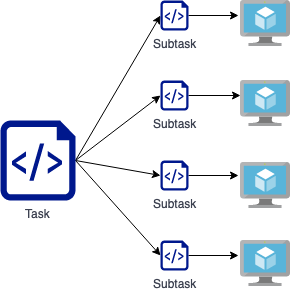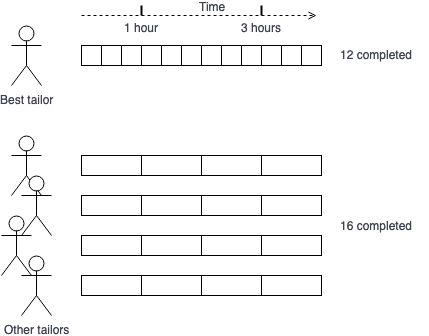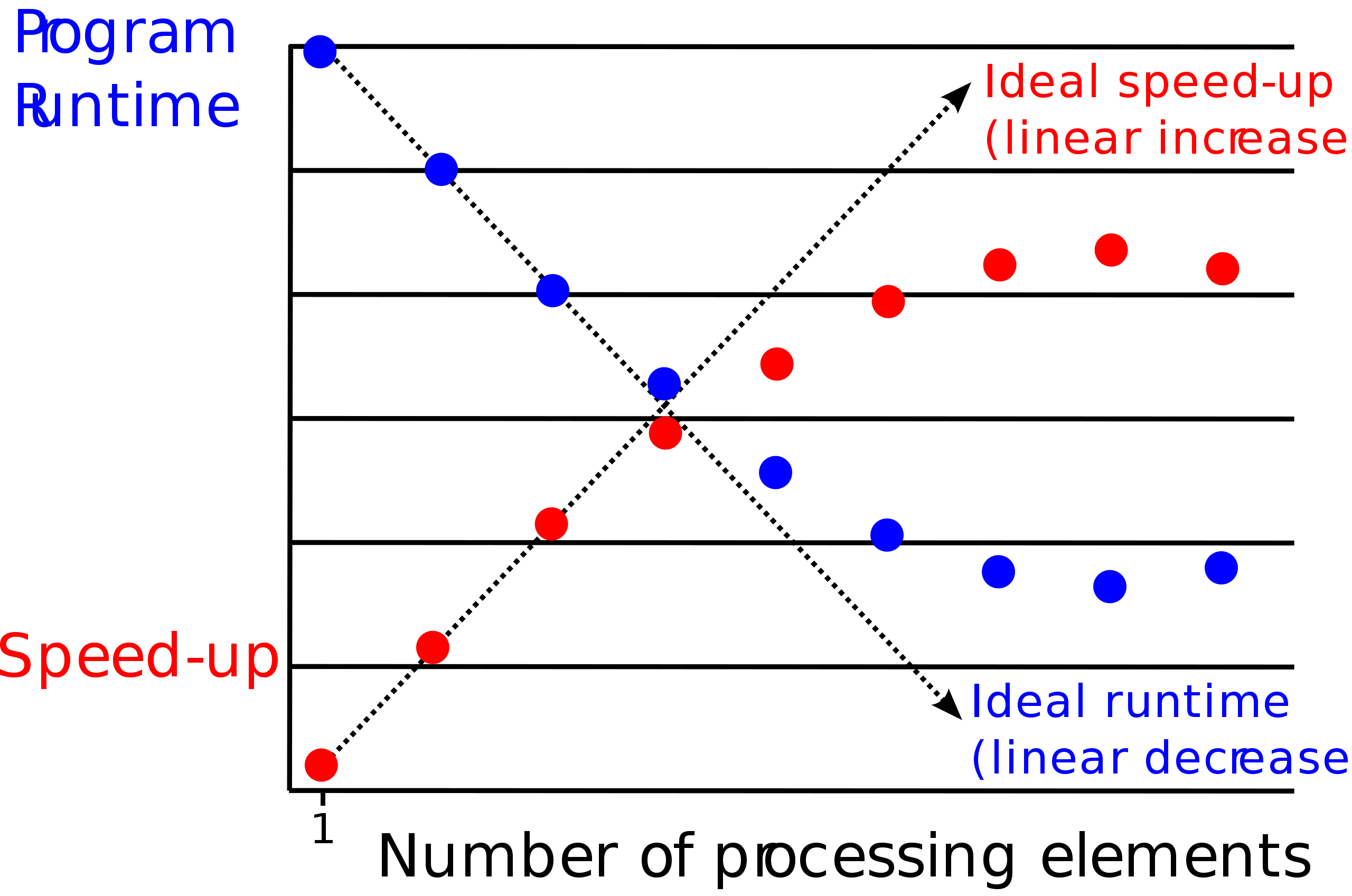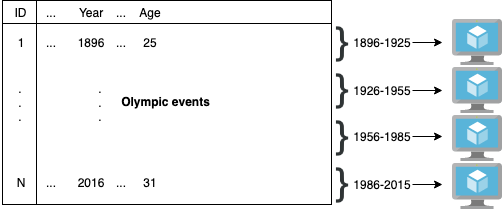What is parallel computing
Introduction to Data Engineering

Vincent Vankrunkelsven
Data Engineer @ DataCamp
Idea behind parallel computing
Basis of modern data processing tools
- Memory
- Processing power
Idea
- Split task into subtasks
- Distribute subtasks over several computers
- Work together to finish task

The tailor shop

Running a tailor shop
Goal: 100 shirts
- Best tailor finishes shirt / 20 minutes
- Other tailors do shirt / 1 hour
Multiple tailors working together > best tailor
Benefits of parallel computing
- Processing power
- Memory: partition the dataset
RAM memory chip:

Risks of parallel computing
Overhead due to communication
- Task needs to be large
- Need several processing units
Parallel slowdown:

An example

multiprocessing.Pool
from multiprocessing import Pooldef take_mean_age(year_and_group): year, group = year_and_group return pd.DataFrame({"Age": group["Age"].mean()}, index=[year])with Pool(4) as p: results = p.map(take_mean_age, athlete_events.groupby("Year"))result_df = pd.concat(results)
dask
import dask.dataframe as dd# Partition dataframe into 4 athlete_events_dask = dd.from_pandas(athlete_events, npartitions = 4)# Run parallel computations on each partition result_df = athlete_events_dask.groupby('Year').Age.mean().compute()
Let's practice!
Introduction to Data Engineering

